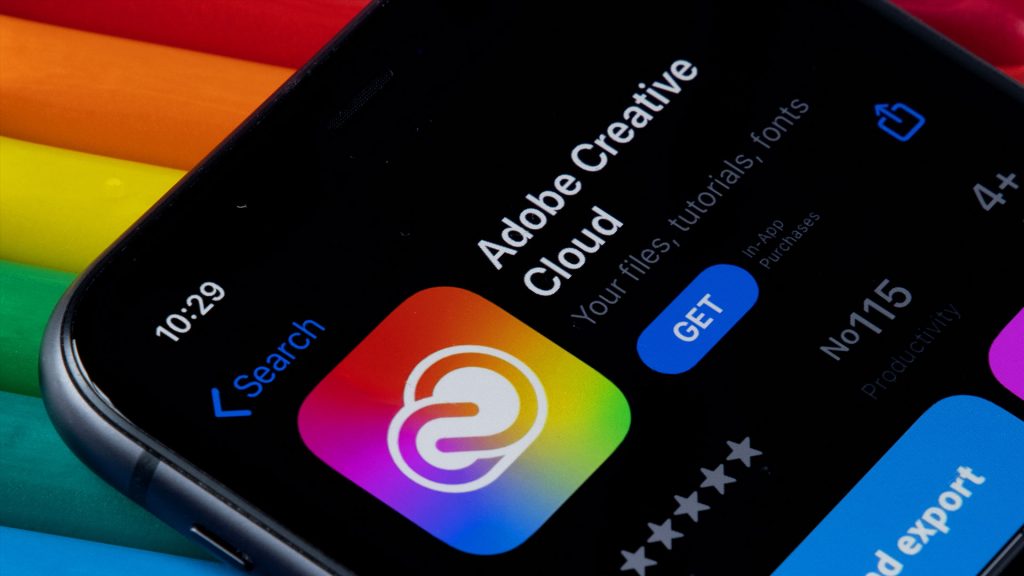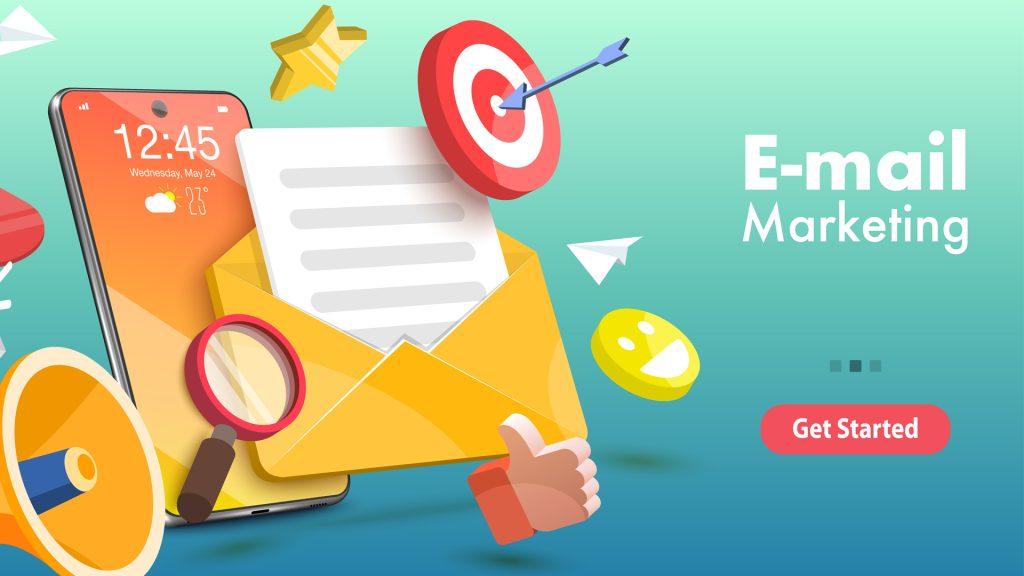7 reasons why SEO is important.

Optimising your website for search engines through SEO (Search Engine Optimisation) offers numerous benefits that can significantly impact your online presence and business success. In the context of the UK market, where digital marketing is highly competitive, leveraging SEO strategies can be a game-changer for businesses. Here are some key benefits of SEO: In conclusion, SEO is an essential aspect of any digital marketing strategy in the UK. It not only improves your website’s visibility but also enhances credibility, user experience, and overall online success. By investing in SEO, businesses can stay competitive in the digital landscape and attract a steady stream of qualified leads.
What are Google PageSpeed Insights & why they are important?

Page Speed Insights is a free tool developed by Google that helps website owners analyze the performance of their web pages on both mobile and desktop devices.
6 graphic design tips for small businesses.

Small businesses can greatly benefit from graphic design as it plays a critical role in creating a strong brand identity and communicating their message to potential customers. Here are some graphic design tips for small businesses: Keep it simple: Simplicity is key when it comes to effective design. A simple design is more memorable, easier to read, and easier to understand. Consistency is key: Use consistent branding elements like colors, fonts, and logos across all marketing materials. This helps build brand recognition and makes your business more easily recognizable. Make it readable: When designing any marketing material, be sure to use legible fonts, appropriate font sizes, and proper spacing. If people can’t read your message, they won’t engage with your business. Use high-quality images: When using images in your designs, make sure they are high-quality, clear, and relevant to your business. Be creative: Don’t be afraid to experiment with different design elements and layouts to make your business stand out. But always keep your audience and brand identity in mind. Hire a professional: Consider hiring a professional graphic designer to create your logo and other branding materials. A skilled designer can help you create a professional look for your business and help you stand out from competitors. Overall, graphic design is a powerful tool for small businesses, as it helps them establish their brand, attract customers, and communicate their message effectively.
7 small business web design tips.

Designing a website for a small business can be a challenging but rewarding process. Here are some tips to keep in mind:
Is email marketing still relevant?

Spoiler alert, yes! It is tempting to rely on social media platforms as a source of sales leads and customer engagement but we would like to state the case for email marketing. When consulting with a new client for the first time, one of the most important elements of a marketing strategy we encourage is the creation and development of a strong customer database. This will pay dividends in the long term growth of any business. A database of people that have signed up for your content or product and have chosen to hear from your regularly is worth its weight in gold. Collecting fans and brand advocates of your product in marketing speak is often referred to as ‘onboarding’. Typically capturing data is a simple subscription form on your website which is powered by a mailing tool such as Mailchimp or Hubspot. Data can be captured, sorted and stored on your chosen mailer platform ready to be deployed as a direct marketing strategy. We look after several businesses that use this tried and tested method of direct marketing and we see success time and time again in terms of engagement and sales. Email marketing is the perfect solution when you need to highlight new products or services, run special offers or and update to your business etc. And as a very important bonus, the results are measurable. Measuring the results from an email campaign will yield valuable information and will steer the course of future campaigns. In truth, not every mail will ‘land’ and perform as expected but this should be seen as an opportunity for you to fine tune your mail until the ‘sweet spot’ is found and you establish what works best for your business. However, this is not a popularity contest! High numbers of sign ups and purchasing data is not the best way to go. Databases should be built organically and naturally and should be populated by lists of people who genuinely want to hear from you. For example, 500 people who have chosen to read your next Newsletter and are big fans of what you do has greater currency than 1000 names who have been purchased or captured by other means. In summary, please don’t underestimate the power of email marketing. The biggest corporations use it all of the time and with careful management, engaging content and used sparingly, email marketing is a powerful tool when growing your business. If you would like more information about helping to grow your audience using email marketing or need a helping hand with content creation, contact us to arrange your no-obligation phone consultation today.
8 principles of good web design

In this months blog, we take a look at the elements and principles need to form a cracking successful website, Good website design can be divided up into key elements that ensure the best outcome for your user. Clear, simple design. Designing a website with too many elements that serve no real purpose to your site visitor should be avoided. A clean uncluttered interface that is easy to navigate and guides your visitors to your content is all that’s needed. The classic rule is that if it takes more than three clicks to get to the target content, your navigation is not working. Responsive. A web design that works across any mobile device is absolutely critical. 86% of web searches and visits are conducted from a mobile device. Your website needs to adapt its content and design instantly to the size of screen required. Google now crawls new websites from a smartphone point of view and ranks them higher based on the usability of the mobile version. Typography and fonts. Readability is obviously important. Whilst it’s tempting to use a funky Google font in your design to show your flair and creativity, it could prove too challenging for your visitor to read and may even impact your search ranking. Modern san serif fonts such as Arial or Helvetica are still best to use for body content or can be used in combination with alternative heading fonts for a touch of styling. Images and pictures. Keep the use of images and graphics to the minimum required to emphasise or illustrate the point of the content. Try to use images that convey success, and happiness and add valuable content to your page. Call to action. Let’s be honest, you want your visitors to buy your product or services but have you made this obvious? A well-placed call to action button such as “buy here”, “order today” etc should always be visible to your visitors. Consider this button as your cash register! Colours and mood. Colour plays an important part in great website design. A little bit of research can reveal the physiological aspects of colour usage, for example, red is considered suitable for food-based sites, orange is creative and playful etc Black pages are cool but you need to consider if your user may have to print out information! The mood or voice of your content should be kept consistent and true to your brand. Don’t do wacky or try to be funny if that’s not what you are! Be professional. Quick loading. Again, vital to the success of your website. Pages need to be delivered as quickly as possible, in less than two seconds if you can! Google has greatly emphasised page speed times when choosing to index websites. This can be achieved with most of the principles I have already listed, light uncluttered pages with a minimal amount of images and reusable menu systems help to keep page loading light. A good choice of hosting provider can also play a part in serving your pages. Fresh content. Keep your website content up to date and add new content regularly. This can be done simply by adding a blog or your existing content can be repurposed. For example, if your content was written in 2017, review it and update it for today. Google is always learning about and discovering new content. In conclusion. Keep things clear, easy to read, easy on the eye and fast to load! Not too much to ask for is it? Functional, user-friendly website design will always win the day and keep important search engines interested in your website. Design and write your website for human beings, not robots!
What is the price of a website?

How much does a website cost? If you are a startup or small business, the need for a website is obvious but how much should you pay to get your business online? In this blog, I will outline the known costs involved with buying a website design and also highlight some avoidable mistakes. It starts with your domain name. The vital www. bit that will identify your business online and define your brand. As much as possible, try to keep your domain name short, memorable and easy to spell! Remember that your first choice of name may not be available so you need to be flexible. It can be beneficial to purchase both the .com and .co.uk versions if they are for sale but just the .co.uk version is a good place to start. .net, .biz etc are also options if your first choice is not available. The average price for a .co.uk is around £8.00 to £10.00, with the more popular .com version costing in the region of £15 -£20. At this point, you will simply own the domain. This is not a website! Before purchase, check the hosting packages on offer from the registrant to see if you will have the option to transfer the domain if you should need to or if the hosting packages suit your intentions for the website are. A good starting point is UK based provider I use, called Fasthosts. This brings us nicely onto hosting for your website. Sometimes referred to as ‘parking’, your domain needs to be attached to a hosting package in order to create your site. Typically, charges are made monthly or yearly and can start from around £90 a year depending on the services you require. The hosting package should also provide you with your email servers. I would also highly recommend that your website includes SSL. This is the Secure hosting that gives your website the small padlock in the search bar. SSL can help with Google search and provide confidence to your visitors, even if you don’t sell products on your website. Costs for SSL are in the region of about £75 per annum but again, check before hitting the buy button. So that’s the basics sorted out and you are now ready to find a designer or maybe create your own design. A good starting point is to decide what the purpose of your website will be. Do you just need an online presence, are you looking to sell products and services or do you need to communicate to your team? The purpose of your website can greatly affect the costs of design. A straightforward brochure-style website which is usually four or five pages, would typically cost £500 to £800 for a one-off design and build. Static, evergreen content giving your business an online presence would be the way to go. If you need something a little more dynamic that you can edit yourself, consider using a Content Management System such as the increasingly popular, WordPress. I will add more blogs about WordPress soon, but in a nutshell, it’s a free, open-source platform for blogging and supporting web designers. You are reading this blog on WordPress and most blogs are built on it today. As I have mentioned, WordPress is free, so make sure you are not charged for it! However, if you don’t have the time or the patience to learn web building software, you will need to employ a designer! Most reputable designers know how to extract the best from WordPress to deliver a fantastic website and which plugins and add-ons your website can utilise. Content is king! To keep costs in control, consider creating your own content. Write the copy yourself. You obviously know everything there is to know about your business idea, so you are the best person to write about it! The same applies to your photography and images. Your web designer will be delighted to receive as much content as possible! Again, if you are not a writer or the next hotshot photographer, factor the cost of content creation into your budget. Research about your business will take time and cost money! Which conveniently leads us to e-commerce websites and regularly updated content. By definition, e-commerce websites are time-consuming and adding a 100 strong product range with individual shipping costs etc takes time! Most designers will charge a monthly fee to manage your web-shop or a high setup fee if you want to update it yourself. At this stage, consider the return on your investment. It’s difficult to put a price on e-commerce websites but you want to be thinking in the four-figure area! So there you are the basic costs to getting your business online. It is worth remembering that by nature, websites are never truly in a finished state. Technology and trends change all of the time and it is important to keep your website fresh with regular content and images. In summary, the process of establishing your website does not need to be expensive and it is best to set your budget in advance and make sure that you get the biggest bang for your buck. It’s definitely worth spending some time researching the options available to you. Domain name and hosting: approximately £100 per year SSL Certificates: approximately £75 per year Website Design: Your budget depends.
The SEO experiment

In order to understand the latest significant update to the Google Search Algorithm (July 2021), we thought it would be an interesting exercise to quickly build a new website in line with the Google guidelines for Search Engine optimisation. We are testing many different aspects including the length of time it takes for a new domain to list high, the effect of the Google Console and more simply, what works and what doesn’t. One thing we have proven beyond doubt is that E.M.D no longer works. Exact Match Domain, but we will come onto that in a future blog. The web and in particular the SEO world is rife with anachronisms and an important one to remember is E.A.T. “Expertise, authoritativeness and trustworthiness are the three most important aspects of a website that Google uses to evaluate its quality.” E.A.T was first launched in 2018 and has increasingly become the measure of search rankings culminating in this latest release from Google Although not confirmed, SEO experts widely believe that E.A.T. may become more important in the race for the top spot than keywords and link juice quality. It remains to be seen if this is true but it is worth bearing in mind if you are considering ordering a new website or about to embark on overhauling your existing pages. Every day is a school day and it will be interesting to monitor the results of our experiment and help us to understand how to maximise performance for clients’ websites. It is worth noting, that several large blue-chip companies have experienced considerable rankings drop-off since the implementation of the update and have questioned Google’s intentions. There is a major update every year on Google and each time it presents new challenges to those of us that are trying to unravel the Black Art that is SEO. For further reading about SEO, we recommend taking a look at: https://www.searchenginejournal.com
10 useful online resources for small businesses

We have put together a list of resources you can take advantage of to help with your business marketing online. Spotibo.com. SEO inspector for your homepage. Woorank.com. Free homepage analyser. Unsplash.com. Royalty free photography. Pexels.com. Royalty free photography.. Mailchimp. Free online mailing list creation. Wix.com. The enemy! Create a basic website for free. Fasthosts.co.uk. Domain names and hosting. Grammarly. Compose bold, clear, mistake-free writing. Gimp. A free image editor software. Infographic templates. Editable infographic templates.
What is a marketing plan?

Many marketing agencies list the elements they believe make up a small business marketing plan. Typically, social media, pay-for-view and clicks and the ever-present Facebook Ads etc. Some of that helps but social media is not strictly speaking the platform for selling your products. The constant need to extol the virtues of your business on Instagram can become tiresome for you and your audience and figures suggest that Facebook Ads are becoming less effective in a crowded marketplace. Setting the targets. What are you hoping to achieve from your marketing plan? More likes and shares? Sell more products or generate sales leads? You need to define your objectives early on when creating a marketing strategy. Does your business operate in a niche? Do you provide a unique service within your industry? Can you deliver on what you say you can? For most small businesses, your marketing should start with a smart, modern website that clearly explains what you do, how you will improve your customer’s life and how people can do business with you. Ideally, you want your website to appear high in search results and to demonstrate your authority within your chosen field. A well-written and designed website will inform your voice, your narrative, and your brand. Your message must then be repeated on your social media platforms to maintain brand identity and a consistent ‘feel’ about your business. Decide honestly which social media platforms will benefit you the most. Just because you can, doesn’t mean you should. The rush to create a Twitter account because ‘that’s marketing is a common one. To cultivate a loyal tribe of followers who hang on to your every tweet is a very time-consuming pastime. It can be done, but accept the fact that results are not instant and sometimes, not at all. Facebook has benefits in that you can instantly ask your friends to like your business page and build your audience from there. There is a small SEO benefit to be gleaned from social media links as an added bonus. However, our biggest marketing recommendation for any small business is people! The most singularly important thing you should do is build your audience with a mailing list! Yep, the humble list of real email addresses of customers old and new. Encourage people to sign up for your blogs, news, free samples, free downloads, free advice, etc. People that choose to hear from you and your business are the best kind. They see value in what you are doing, they like you and or your product. People from your mailing list are more likely to share, recommend, and promote your business than any social media platform could! You will always have an audience, and brand evangelists who will look after a sizable chunk of your marketing for you. An example of a plan. A well-designed, modern website. Clear and easy to use. Brand matched Facebook Business page. Brand consistent message. A mailing list sign-up option. Build your audience. Customer feedback forms. Learn from good and bad reviews. Customer testimonials. Prove what you do. Frictionless transactions. Easy to do business with you. Clear pricing structure. Don’t be vague. Network for future sales. Build a database of contacts. We have applied this simple plan to many of our clients who in turn have seen genuine business growth by repeatedly sticking to these methods. Obviously, there needs to be a certain degree of flexibility depending on the nature of your business but the basic principles are the same.

